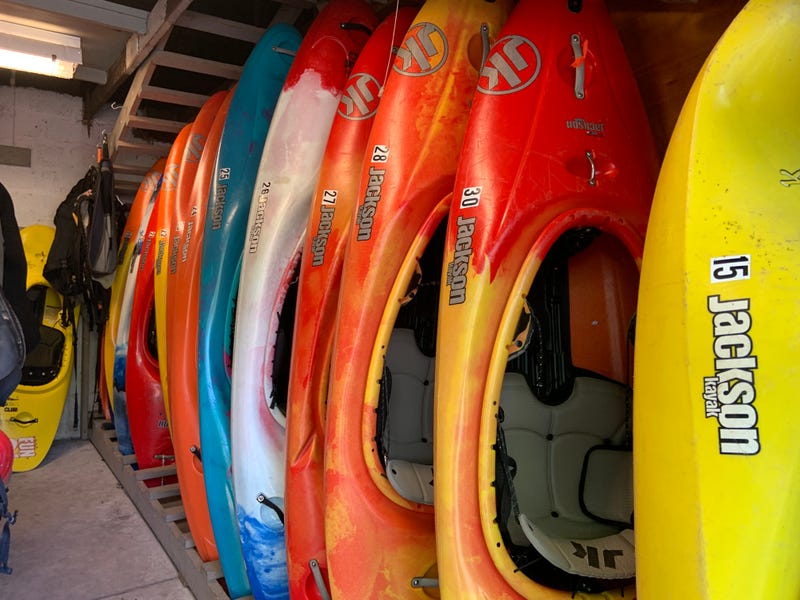
In this week’s “Into the Wild,”KYW’s John McDevitt takes us to East Falls to find the Philadelphia Canoe Club, a hidden gem of the Schuylkill River. On a recent visit, Canoe and Kayak instructor Looie Voorhees gave McDevitt some boating tips.
PHILADELPHIA (KYW Newsradio) — After selecting a boat, canoe and kayak instructor Looie Voorhees helps paddlers suit up in life vests, and she teaches them the basic strokes.
Related
“I’m going to put you in a flat water solo canoe,” said canoe and kayak instructor Looie Voorhees, sizing up your reporter.
Next: getting into the boat.
“I’ll get in and show you what to do,” she said. “You take the paddle and you put it across the gunnels. Now the boat is extremely balanced, so you don’t want to put both your feet here because you don’t want to tilt the boat,” she says.
Then it was into the canoe, and then into the river. And eventually everyone would make it back to the dock.
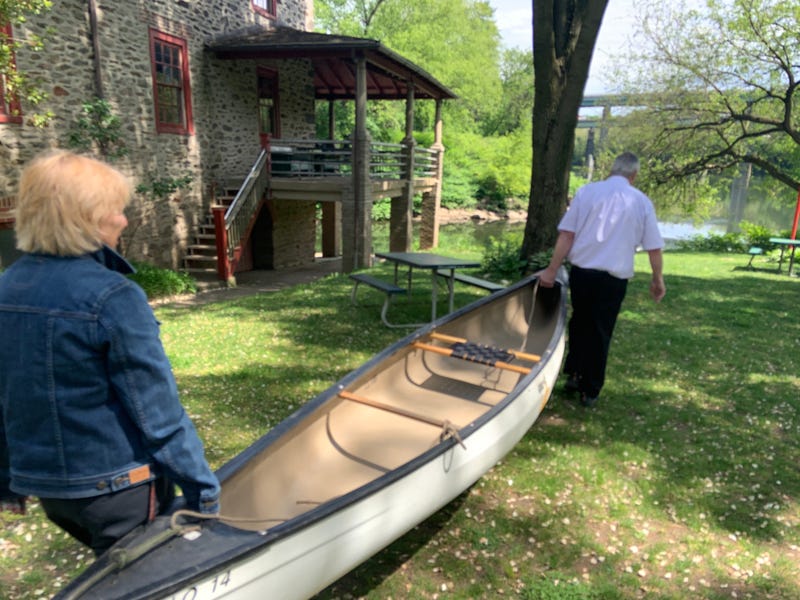
The Philadelphia Canoe Club is a nonprofit recreational club, offering classes for canoeing, kayaking, and stand-up paddle boarding. The Club’s dock is situated at the confluence of the Wissahickon and Schuylkill rivers.
A public — but hidden — gem
“It’s like an Oasis. I never knew this was here,” said your reporter.
“Do you know how many people say that, who live two blocks up the street?” exclaimed Voorhees.
“If I had a nickel for every time I heard that, I could retire,” added Ken Conly, the club’s director at large and a white water kayak instructor.
“For the most part, everything is open to the public. All of our training, all of our events — is all open to the public. So we never want people to feel that they are not welcome here,” Conly said. “But membership does have some privileges.”
Classes and canoe trips are scheduled all year round. Instructors are all American Canoe Association, or ACA-, certified and are also certified in wilderness first aid and CPR. Equipment, such as the boat, paddle and life jacket, is included in the lesson.
“Everybody here at the Canoe Club is a volunteer. Everything that we do here is on a volunteer basis. None of our instructors are paid,” Conly said.
“We generally run work days two or three times in the spring. That’s basically just to maintain the building, and the premises, to do repairs of a small nature. All of that work is done on a volunteer basis. So everything we do is basically driven by the love for this place, our love for the sport and passing it on to other people.”
A seaworthy legacy
Member Griffin Affel says the clubhouse building and the club itself are quite old.
“We’ve been leasing this building from the city for 118 years now,” Affel said.
Related
He is also the treasurer of the Wissahickon Mills Foundation, the public charity that takes care of the building — which used to be an old corn mill.
The building dates back to the early 1700s, possibly before.
“We’re still trying to nail that down. We think it may go back as far as 1690. We may have to even get it radio-carbon dated,” Affel said. “So we are still working on that.”
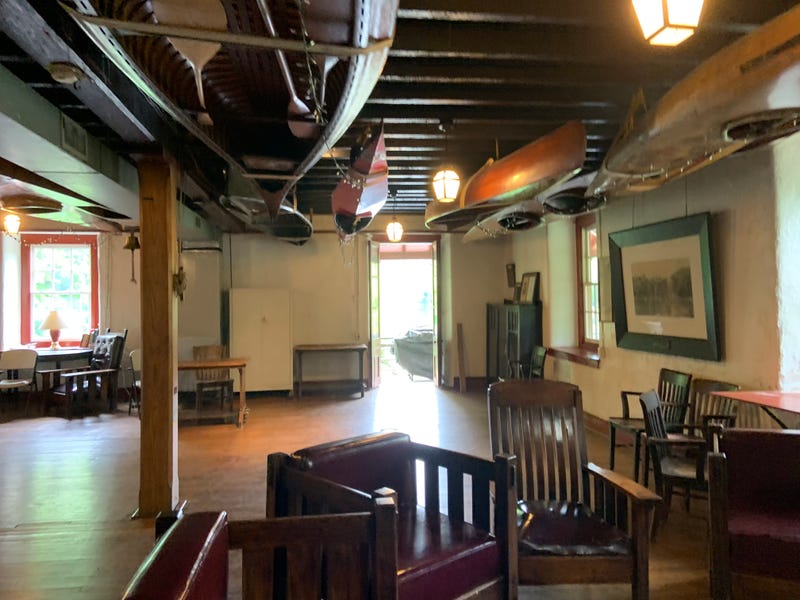
“The club was formed in 1905 as a social club, and its core founding members were doctors from the area and graduates of the University of Pennsylvania,” he said.
“Coincidentally, the club’s new era and commitments to paddlesport education and instruction were initiated by another doctor from UPenn, Paul Liebman, who became PCC’s Commodore in 1970.”
Inside the clubhouse are lockers, showers and space with a fireplace and a kitchen. Decorative canoes are suspended from the ceiling.
Safety first
Voorhees says the club’s training classes place an emphasis on safety.
“Paddling is a wet sport. People need to understand they are going to get wet. And in a lot of our lessons, we jump right in water with the life jackets to test them. So that’s before you get in the boat,” said Voorhees.
“During a lesson we have everybody fall out of their boats so that, you know — in a controlled environment with your instructors — what it’s like to fall out of a boat … and to get back in.”
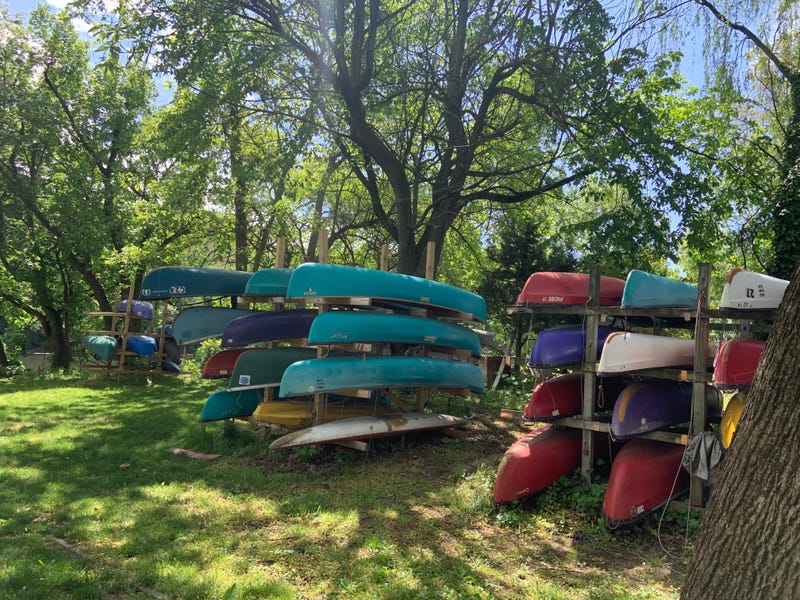
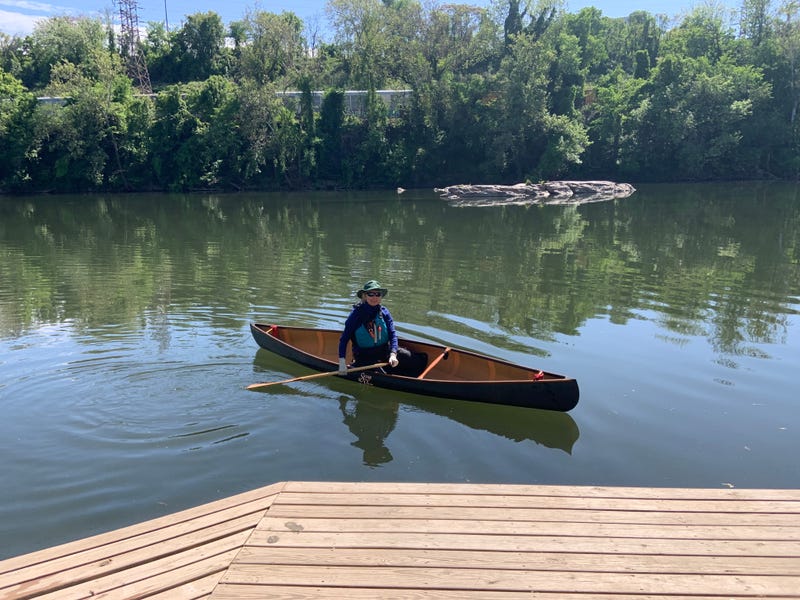
And with kayaking and white water kayaking, Conly said, there are some further safety instructions.
“Rolling helps break down some of the fears that people have in white water kayaks,” he said.
“When you are in a white water kayak, you have what is called a ‘skirt’ on. And a skirt goes around your waist and it also goes around the boat, and that is to prevent the water from going into the boat as you are splashing through the rapids. We teach how to get out of that when you are upside down. That’s called a wet exit.
“What we also teach, in the wintertime, is that we go to a local pool here and we fit students in the boats and we give them the instruction on how to do what is called an ‘Eskimo Roll.’ So, you use your body and paddle to up-right the boat.
“People who know how to roll, generally, lose some kind of fear as they are going through the rapids,” Conly added.



